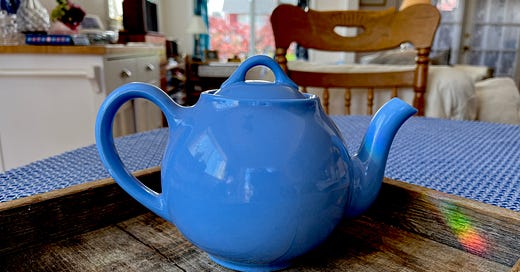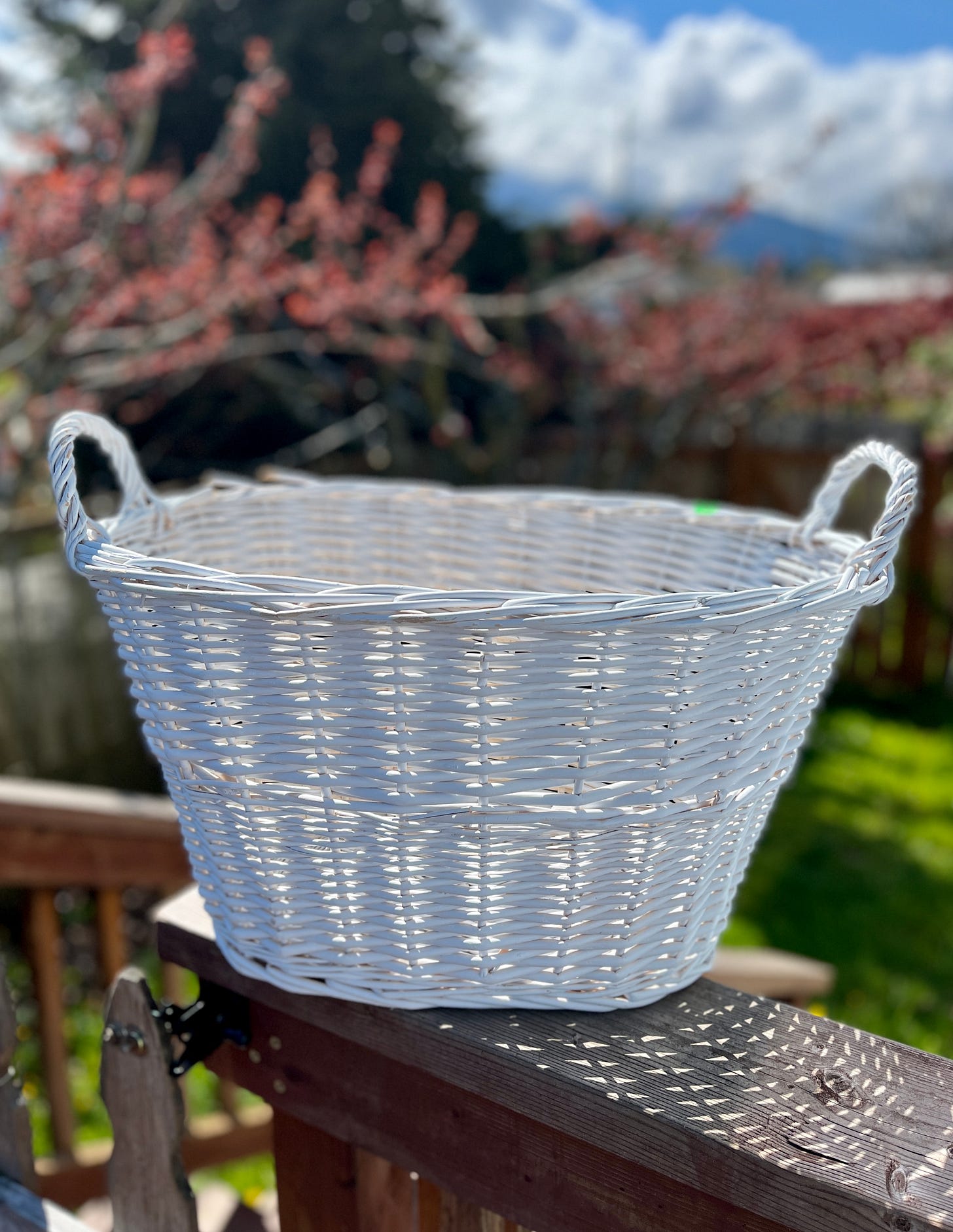When I need something for my house, kitchen, or garden, many times I find it at an estate, garage, or yard sale. I love the hunt and liken my looking through other peoples stuff to being a bit like an archeological dig. I wonder…
Who are the people pictured in old picture frames and scrapbooks?
What might their lives have been like?
Did they like to cook, garden, sew, read, travel?
Recently I am in need of a small laundry basket that will fit next to my washing machine. My current one, which I will keep, has too snug of a fit. I turn at the first Garage Sale sign I see, drive the few blocks to where it is, and park in the shade and lower the windows a bit for my nearly constant companion, GP. I take a turn around the garage and find exactly what I need. Same shape. Smaller size. Very gently used. Three dollars. Perfect.
A half mile down the road on the corner is positioned an A-frame sign with ‘Estate Sale’ on it. Many times these are run by professionals brought in by family seeking help in dispersing ancestral ephemera. As there are lots of cars, this one looks to be well attended and I park a bit further away again where there is shade. Inside the house I see a splendid view out to the water to the north that I’m sure will be enjoyed by its next owners. In the kitchen I find a silicon rolling mat with circles and measurement markings for pastry making—again very lightly used if at all—for fifty cents.
In the living room across from the big picture windows is a curved glass china cabinet with a teapot on the upper shelf. Currently I don’t have a teapot making do for years with a medium-small blue and white pitcher and small ceramic bowl I use as lid to steep the tea. The one on the shelf has sweet little pink roses and a pour spout trimmed with a bit of gold. I open the lid and see it is terribly stained inside. Kathy, an acquaintance of many years, is standing right next to me looking at a large blue bowl also in the cabinet and I ask her what she thinks of the teapot.
I have lots of teapots, she says. I’m bringing lots of things down to the mall and setting up a stall.
I know the store. It often times has treasures in excellent shape and I kick myself for not picking up the Blue Calico set there when I first set eyes on it months back— eighty dollars for service for four including teapot, creamer, and sugar—as the next day when I go back to claim it, it is gone gone gone. Definitely a you-snooze, you-lose moment. I decide to wait and see what Kathy might bring to her new stall at the store.
The next day, just as I am leaving the farmers market, Kathy calls inviting me over to see her collection. When I get there, she ushers me straight through to the butler’s pantry between the dining room and kitchen. My gaze goes up high to the tall ceiling of her vintage late Victorian home. High up on each of the pantry’s four walls are shelves with teapots…dozens and dozens of teapots…carefully organized by size and color. Brown, yellow, blue, green, gold, maroon, red, and patterned. I’ve never seen so many teapots in one place.
To my right is the blue shelf. I look up and point. I love this blue, I say. She pulls over a step ladder, climbs up, and pulls down the first blue one. It has a note inside identifying it as originally belonging to her grandfather. This one will be kept and passed on to family she says, but right next to it is its exact mate. She carefully lifts it off the shelf and hands it to me.
This is for you.
On the bottom I read Lipton and when I turn it over and take the lid off to look inside I see that it is in pristine condition. I am thrilled.
I come home and give it a gentle wash. Thinking of how long it has been on the shelf waiting to be put into service, I get right to it. I boil fresh water and pour some in to heat the pot, empty it out, place tea leaves inside, pour more fresh boiling water over them, and set the lid on top to steep a first pot. While I wait I do a web-search and learn that these pots were given out as premiums to Lipton tea drinkers. This one is from the 1930s as it has a strainer inside the spout which the later versions did not have.1
Now I have my own Mrs Potts and, over time, I’m sure she will have stories to tell.






